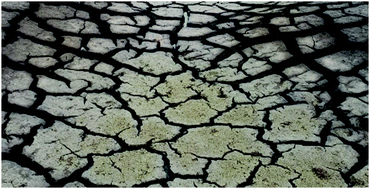The optical absorption spectra of spontaneously electrical solids: the case of nitrous oxide
Abstract
Absorption spectra of films of N2O, in the range 115–160 nm, are presented for deposition temperatures between 33 K and 64 K. Observed shifts in the absorption energy vs. deposition temperature are analysed in terms of the temperature-dependent spontaneously electrical (‘spontelectric’) fields present in the films. Using a simple electrostatic theory, we suggest that (i) spectra are associated with Wannier–Mott excitons, (ii) the action of the electric field upon the excitons suffers a blockade at ≤54 K for the C-state and ≤52 K for the D-state of N2O, (iii) the blockade may be attributed to structural defects, which trap excitons, limiting their size and (iv) films form with defect-free regions containing 324 ± 3, 168 ± 46 and 95 ± 1 molecules of N2O at 54 K, 52 K and 50 K respectively, yielding an experimental indication of the scale size of regular periodicity associated with Wannier–Mott excitons. Results demonstrate how the spontelectric effect can be used as a tool for exploring the structure of solids and give a graphic image of the structural changes that take place close to the known phase change at 47 K/48 K.



 Please wait while we load your content...
Please wait while we load your content...